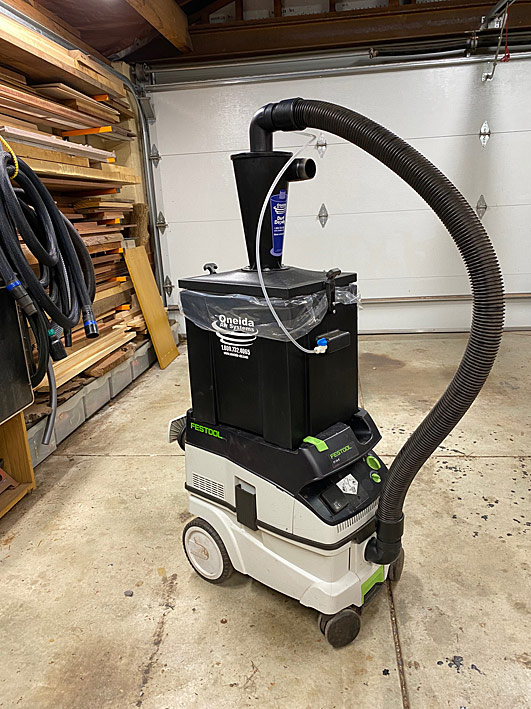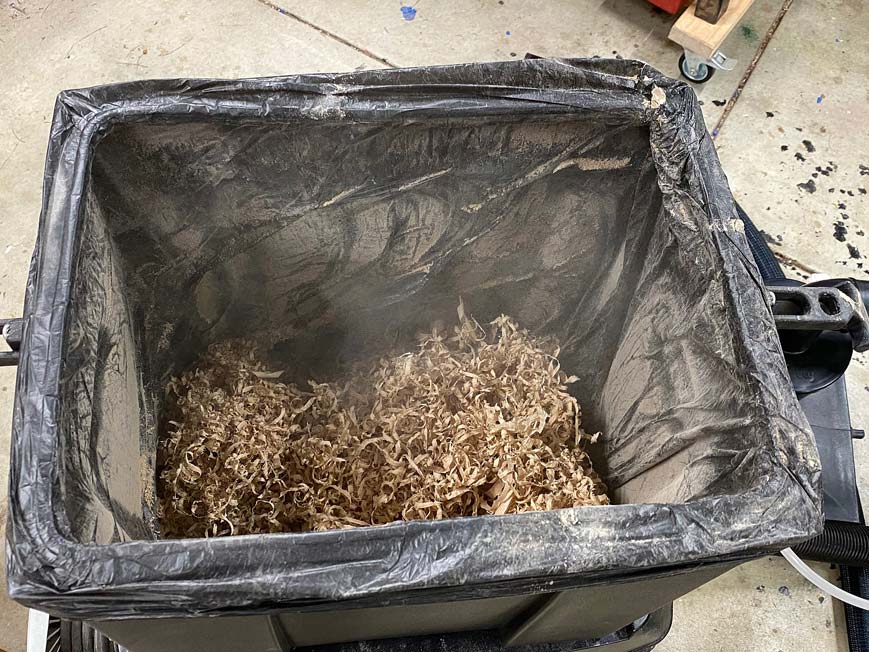Doug71
Established Member
As the title says, asking this as many people seem to use them and recommend them but I have never really understood why?
I have a Festool CT36 which I use with my router, plunge saw, domino etc, works really well, takes ages to fill a bag and the filters never seem to get dirty.
I see these homemade systems with pipes all over the place and talk of pressure relief valves etc, it all seems very complicated.
Is the purpose of a cyclone to save on bags, keep the filter cleaner and give a small, cheap extractor more capacity?
I like how I just remove the full bag from the CT, throw it away and fit a new one where with cyclones you seem to end up with a bucket (or barrel) full of dust and shavings to dispose of.
I can understand using one if there was loads of really fine dust (plaster?) or if you want to really increase collection capacity but if it's hooked up to a PT or something surely you would want a bigger extractor anyway?
I know big ones work well on a bigger scale for machinery when you have 4"+ pipes but never seen the need for one on a shop vac type extractor.
Surely if they were an essential every power tool manufacturer would be selling a ready made all in one system/solution but I think the only one I know of is the Festool pre-separator.
I'm not knocking them, it's a genuine question as if I'm missing out it looks like it would be a fun project to build but I can't see what benefit it would give me?
Thanks, Doug
I have a Festool CT36 which I use with my router, plunge saw, domino etc, works really well, takes ages to fill a bag and the filters never seem to get dirty.
I see these homemade systems with pipes all over the place and talk of pressure relief valves etc, it all seems very complicated.
Is the purpose of a cyclone to save on bags, keep the filter cleaner and give a small, cheap extractor more capacity?
I like how I just remove the full bag from the CT, throw it away and fit a new one where with cyclones you seem to end up with a bucket (or barrel) full of dust and shavings to dispose of.
I can understand using one if there was loads of really fine dust (plaster?) or if you want to really increase collection capacity but if it's hooked up to a PT or something surely you would want a bigger extractor anyway?
I know big ones work well on a bigger scale for machinery when you have 4"+ pipes but never seen the need for one on a shop vac type extractor.
Surely if they were an essential every power tool manufacturer would be selling a ready made all in one system/solution but I think the only one I know of is the Festool pre-separator.
I'm not knocking them, it's a genuine question as if I'm missing out it looks like it would be a fun project to build but I can't see what benefit it would give me?
Thanks, Doug






































